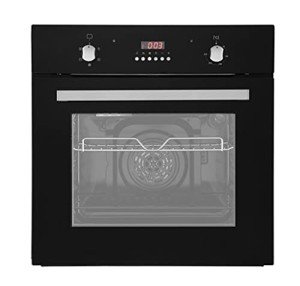The Future of Culinary Convenience: Integrated Ovens and Hobs
In the ever-evolving world of kitchen design, integrated ovens and hobs are at the forefront of modern-day cooking innovation. These home appliances not only guarantee visual appeal but also boost functionality and effectiveness, transforming how we prepare our meals. As homeowners increasingly look for to produce smooth, stylish, and user-friendly cooking areas, the integration of ovens and hobs provides a perfect solution. This post explores what integrated ovens and hobs are, their benefits, and key considerations for those seeking to upgrade their kitchen area.
What Are Integrated Ovens and Hobs?
Integrated inbuilt oven and hobs are kitchen devices flawlessly built into the cabinets or counters, instead of sticking out as separate entities. Integrated ovens are developed to mix into kitchen area systems, providing a flush surface with surrounding cabinets. Likewise, integrated hobs are installed directly into the counter top, creating a structured look. This minimalist style method not only elevates the visual appeal of the kitchen however likewise takes full advantage of readily available area.
Kinds Of Integrated Ovens
Single Ovens: These standalone units are designed for simpleness and ease of use, including a single cooking chamber and numerous cooking modes such as baking, barbecuing, and roasting.
intergrated oven : Ideal for bigger families or avid cooks, double ovens provide two independent cooking compartments, allowing several dishes to be prepared concurrently at various temperatures.
Mix Ovens: Blending conventional baking and steam cooking, mix ovens provide adaptability for various cooking requirements, keeping moisture while ensuring perfectly prepared meals.
Kinds Of Integrated Hobs
Gas Hobs: These hobs enable exact temperature control and immediate heat, making them a favorite amongst expert chefs and cooking enthusiasts.
Induction Hobs: Known for their effectiveness and security, induction hobs use electro-magnetic energy to heat pots and pans directly. They are fast to heat and cool off quickly, minimizing the risk of burns.
Electric Hobs: Featuring smooth ceramic or glass surface areas, electric hobs are simple to tidy and offer an even heat circulation for a range of cooking designs.
Advantages of Integrated Ovens and Hobs
1. Space Optimization
With the trend of smaller sized living areas and open-concept homes, integrated appliances help make the most of kitchen area. By fitting perfectly into kitchen cabinetry, kitchen areas can appear larger and more open, minimizing clutter and boosting visual appeal.
2. Visual Appeal
Integrated ovens and hobs supply a smooth, modern-day appearance that fits well within different design styles. The ability to customize kitchen cabinetry makes sure that property owners can achieve a cohesive look that matches their design, whether contemporary, traditional, or something in between.
3. Enhanced Functionality
Integrated home appliances typically feature sophisticated features such as smart innovation, self-cleaning alternatives, and numerous cooking modes. These enhancements not only enhance the cooking process however also boost functionality, making cooking a satisfying experience.
4. Safety Features
Integrated hobs, specifically induction designs, are considered more secure than traditional cooking surfaces. They cool off quickly, reducing the danger of burns, and typically include features like kid locks and automated shut-off for extra safety.

Secret Considerations When Choosing Integrated Ovens and Hobs
1. Space and Layout
Before buying integrated appliances, think about the area readily available in your kitchen area. Measure the cabinets and countertops carefully to ensure an ideal fit, enabling sufficient ventilation and setup space.
2. Cooking Needs
Assess your cooking habits and preferences. If you frequently entertain or cook large meals, a double oven might be the best choice. Conversely, if you're a periodic chef, a single oven might be adequate. Similarly, picking in between gas, electric, or induction hobs will depend upon your cooking design and convenience level.
3. Energy Efficiency
With rising energy expenses and growing ecological issues, selecting energy-efficient appliances can save cash in the long run. Try to find items with high energy rankings and features like programmable timers and eco-modes.
4. Quality and Brand
Purchasing premium appliances from trustworthy brand names guarantees durability and performance. Checking out client reviews and seeking recommendations can help narrow down the best choices customized to your needs.
Conclusion
Integrated ovens and hobs are more than simply kitchen area home appliances; they represent a shift towards a more practical, elegant, and effective technique to cooking. As house owners focus on smooth design, benefit, and advanced functions, these integrated services will undoubtedly form the kitchens of tomorrow. Whether refurbishing a kitchen or developing a new one from scratch, integrating ovens and hobs is a financial investment that assures to improve both culinary experiences and the overall visual of the home.
